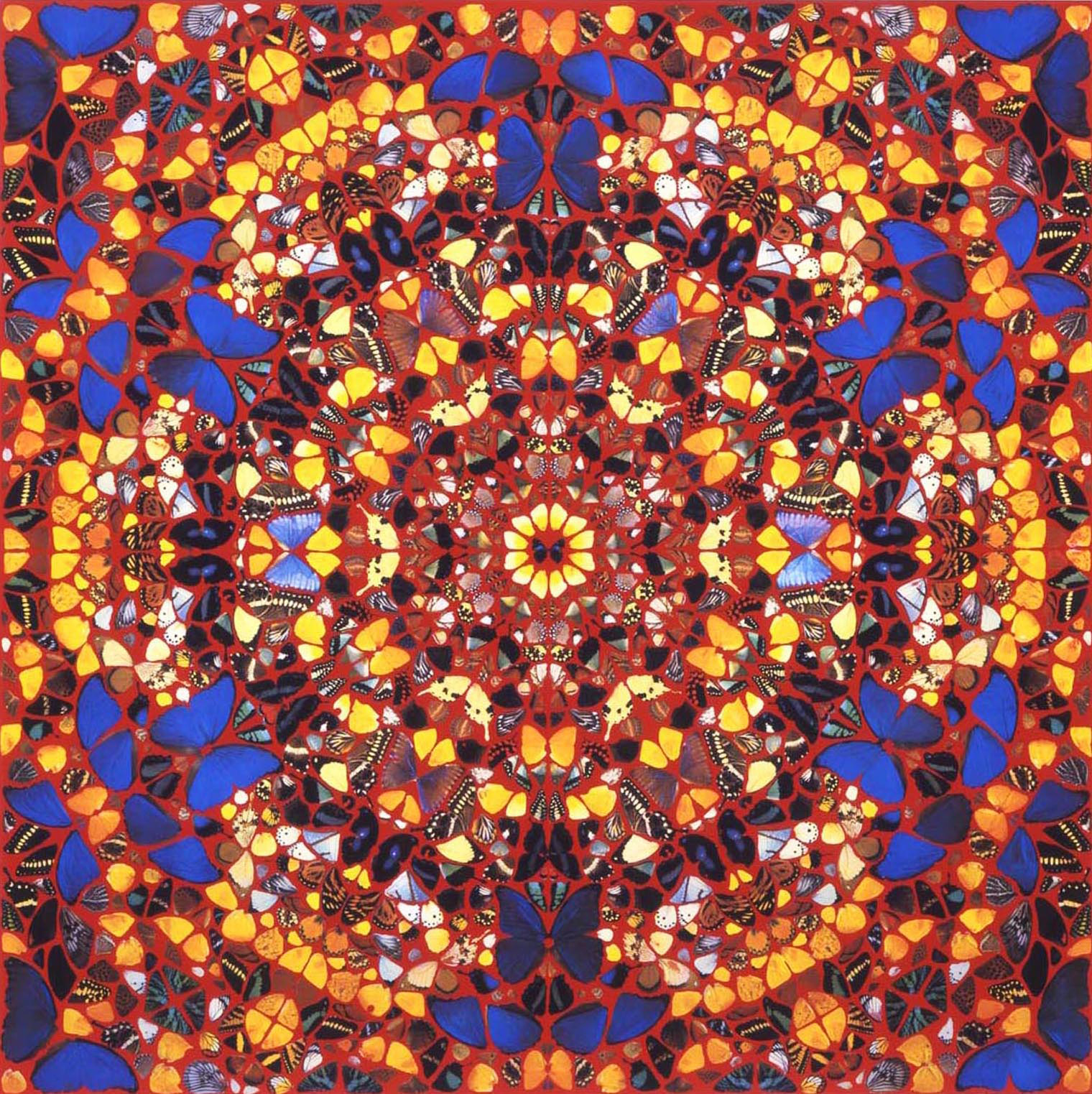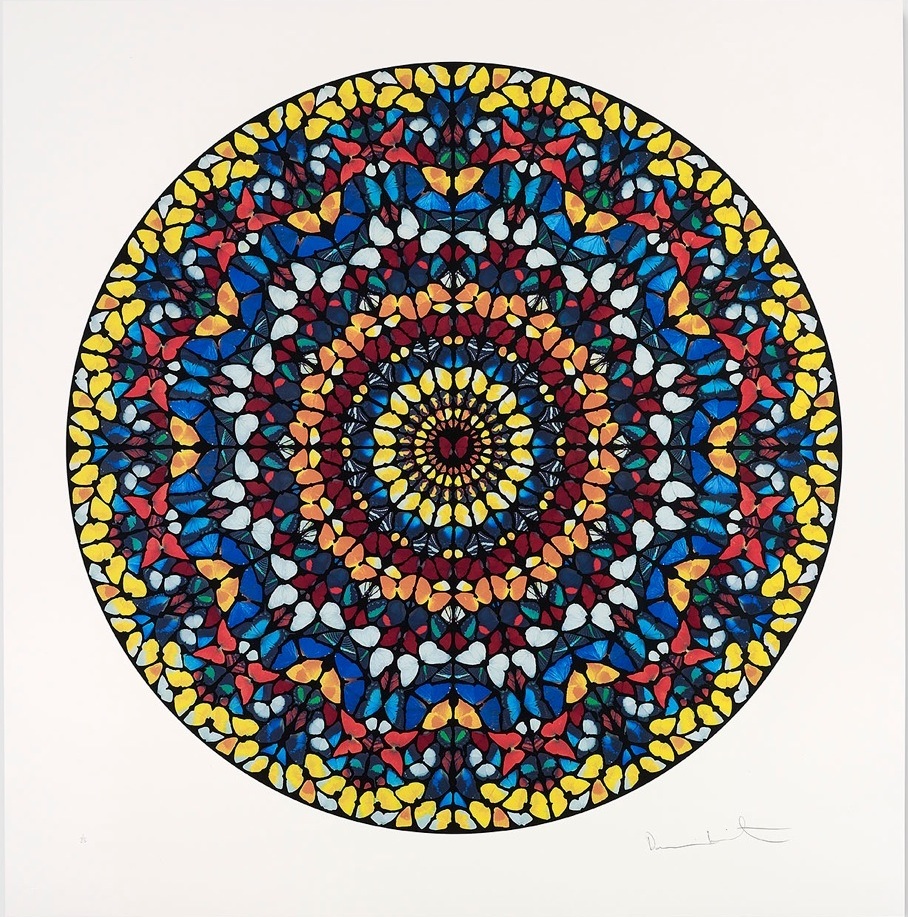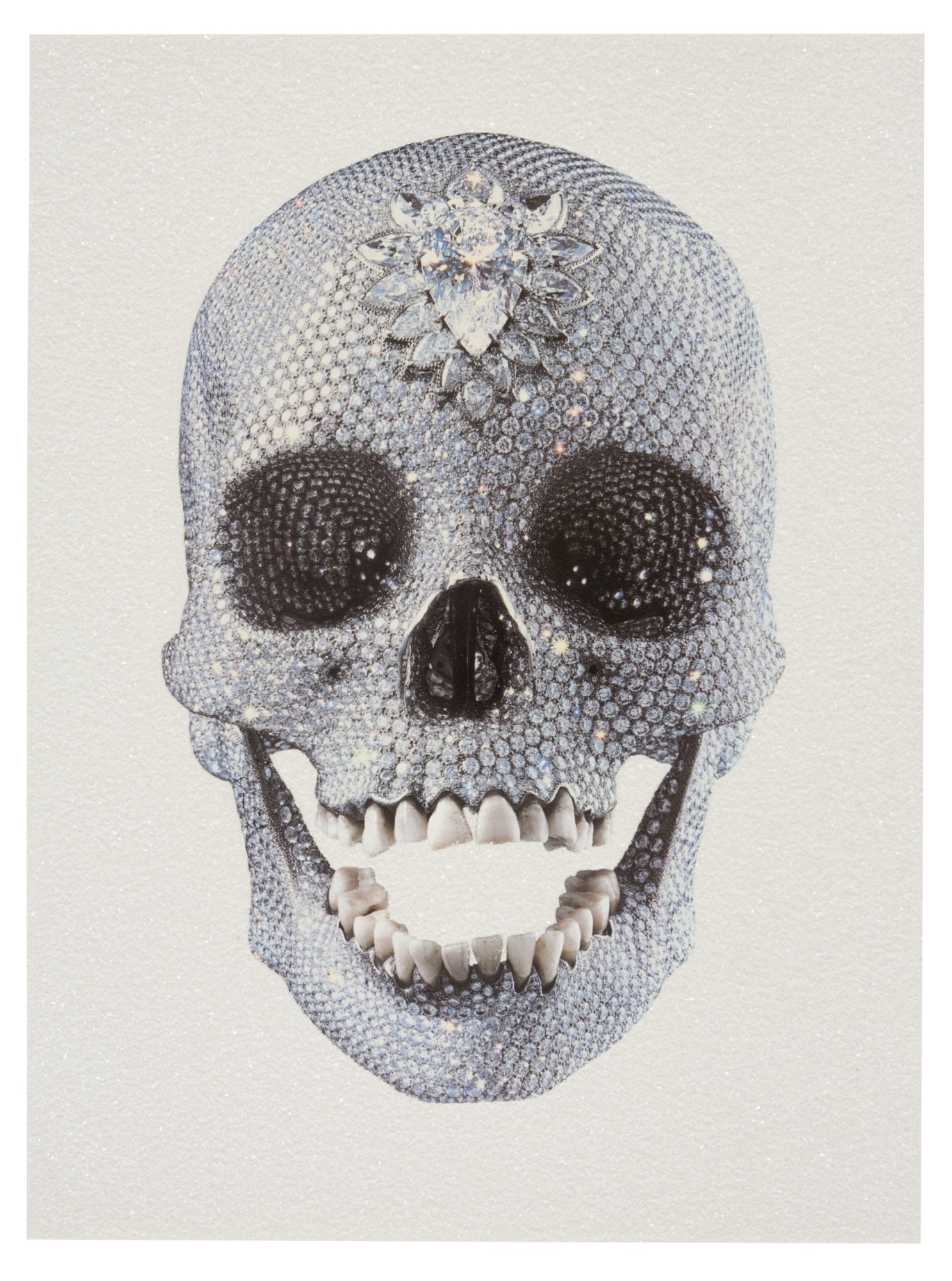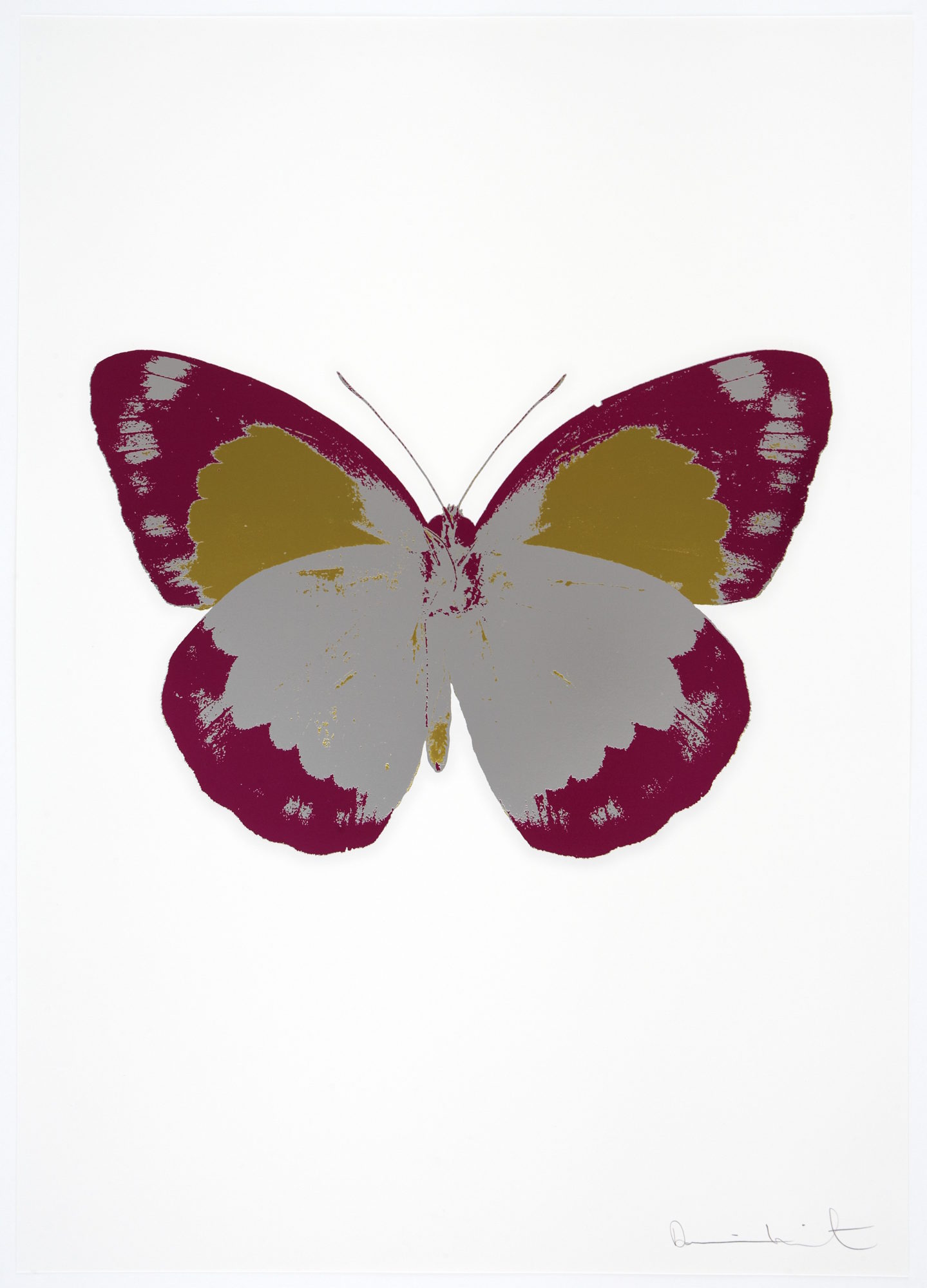Contemporary Artist Damien Hirst was born in Bristol in 1965. Damien Hirst grew up in Leeds with his mother and stepfather, after Hirst was left by his biological father at the age of 12. A rebellious youth Damien Hirst was often at odds with his Catholic mother, who was disapproving of Hirst’s punk rock music and fashions. Damien Hirst did poorly throughout most of his early education and was arrested on two occasions for shoplifting. Hirst seemed to only have an interest in art achieving high recognition from his art instructors.
Initially refused admission, Damien Hirst took a foundation course at Leeds School of Art before applying for college. Hirst was rejected by St. Martin’s but moved to London, where he worked for two years in building construction. In 1986 Damien Hirst was accepted into the BA Fine Art course at Goldsmiths University of London. While a student, Damien Hirst had a placement at a mortuary, an experience that greatly influenced Damien Hirst and Hirst’s art.
In 1988, Damien Hirst conceived, organized and promoted an independent student art exhibition entitled “Freeze.” The art exhibition was held in a Docklands warehouse and featured several pieces by Hirst. This amazingly successful self-promoted art exhibition is widely believed to have been the starting point for Damien Hirst and the Young British Artists movement. The art exhibition was attended by art dealer Charles Saatchi, and art curators Norman Rosenthal and Sir Nicolas Serota.
In 1990 Damien Hirst along with artists Carl Freedman and Billie Sellman curated another warehouse art show, where Hirst showed his first “Animal” installation A Thousand Years, consisting of a large glass case containing maggots and flies feeding off a rotting cow’s head. The piece was bought by Charles Saatchi, marking the beginning of Saatchi’s patronage of Damien Hirst and Hirst’s art. Saatchi’s benefaction would prove to be very important for Damien Hirst and his art career. In 1992, Saatchi commissioned of Hirst the art piece The Physical Impossibility of Death in the Mind of Someone Living, featuring a shark in formaldehyde for about $32,000. The piece would be sold in 2004 for $12 million.
Since then, Damien Hirst has organized a succession of art exhibitions and produced a body of artwork that has proved extraordinarily provocative. The exploration of mortality has been one of the central themes found in the art of Damien Hirst. Hirst is best known for a series of artworks entitled The Natural History Series, in which dead animals are presented as memento mori installations.
In 1994, Damien Hirst had difficulties getting the art into the United States to exhibit it. In 1995 Damien Hirst won the Turner Prize for Two Fucking and Two Watching featuring a rotting cow and bull. New York public health officials banned the piece because of fears of “vomiting among the visitors”. In 1996 Damien Hirst had his first solo art show No Sense of Absolute Corruption at the Gagosian Gallery in New York.
Damien Hirst and his artwork are synonymous with controversy. In 1999, Damien Hirst and Hirst’s art exhibition Sensation, at the Brooklyn Museum of Art, provoked protests by PETA (an animal rights organization). The only effect of the protest against Hirst and the show was an extraordinary amount of publicity.
Damien Hirst has received enormous praise as well as criticism of his art, particularly from the media and art critics. Hirst believes that the public is negatively influenced by the media, and develops preconceived opinions before viewing the art. By distancing themselves from the art, they are cheating themselves of the full experience. Damien Hirst says of his art “I hope that it makes people think about things that they take for granted. Like smoking, like sex, like love, like life, like advertising, like death… I want to make people frightened of what they know. I want to make them question.”
In April 2003, the Saatchi Gallery opened a Damien Hirst retrospective, bringing a developing strain in Saatchi’s relationship with Hirst to a head. Damien Hirst disassociated himself from the retrospective, angered that a Mini car that Hirst had decorated with the Hirst trademark spots for charity was being exhibited as a serious work of art. Damien Hirst bought back 12 works of art from Saatchi for a total of £8 million. Damien Hirst had sold these pieces to Saatchi in the early 1990s for a considerably smaller sum. Despite Hirst’s insults to Saatchi, Saatchi remains a staunch supporter, labeling Hirst a genius.
In June 2007 Damien Hirst opened his exhibition Beyond Belief, highlighting Hirst’s new work including the center-piece, a memento mori titled For the Love of God, a human skull recreated in platinum and adorned with 8,601 diamonds. The asking price for For the Love of God was £50,000,000.
Hirst is renowned for his Butterfly Series, in which Hirst arranged thousands of butterfly wings in a mandala-like pattern. Another popular Hirst series are the ‘Spin’ paintings. Damien Hirst designed the sets for Glastonbury, a play about the Glastonbury music festival, and Hirst designed and directed Breath, the 30-45 second film version of Samuel Beckett’s 1969 short.
The art of Damien Hirst has been exhibited widely, in Britain, Korea, the USA, Australia, and countries all over Europe. Hirst’s work is included in many private collections and in permanent collections at public museums and galleries. Damien Hirst now lives in Devon with his sons Connor (b.1995) and Cassius (b.2000) and girlfriend Maia Norman. Damien Hirst works at his home and in London.
The art of Damien Hirst has a visual power that is virtually unmatched by any possible description of it. One cannot really hope to understand it, or even visualize it without experiencing it firsthand.
“Ordinary things are frightening. It’s like, a shoe is intended to get you from one place to another. The moment you beat your girlfriend’s head in with it, it becomes something insane. The change of function is what’s frightening… That’s what art is.” – Damien Hirst









